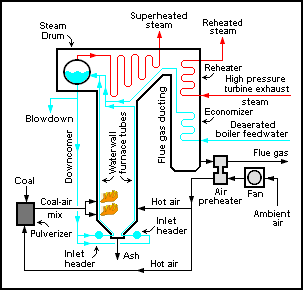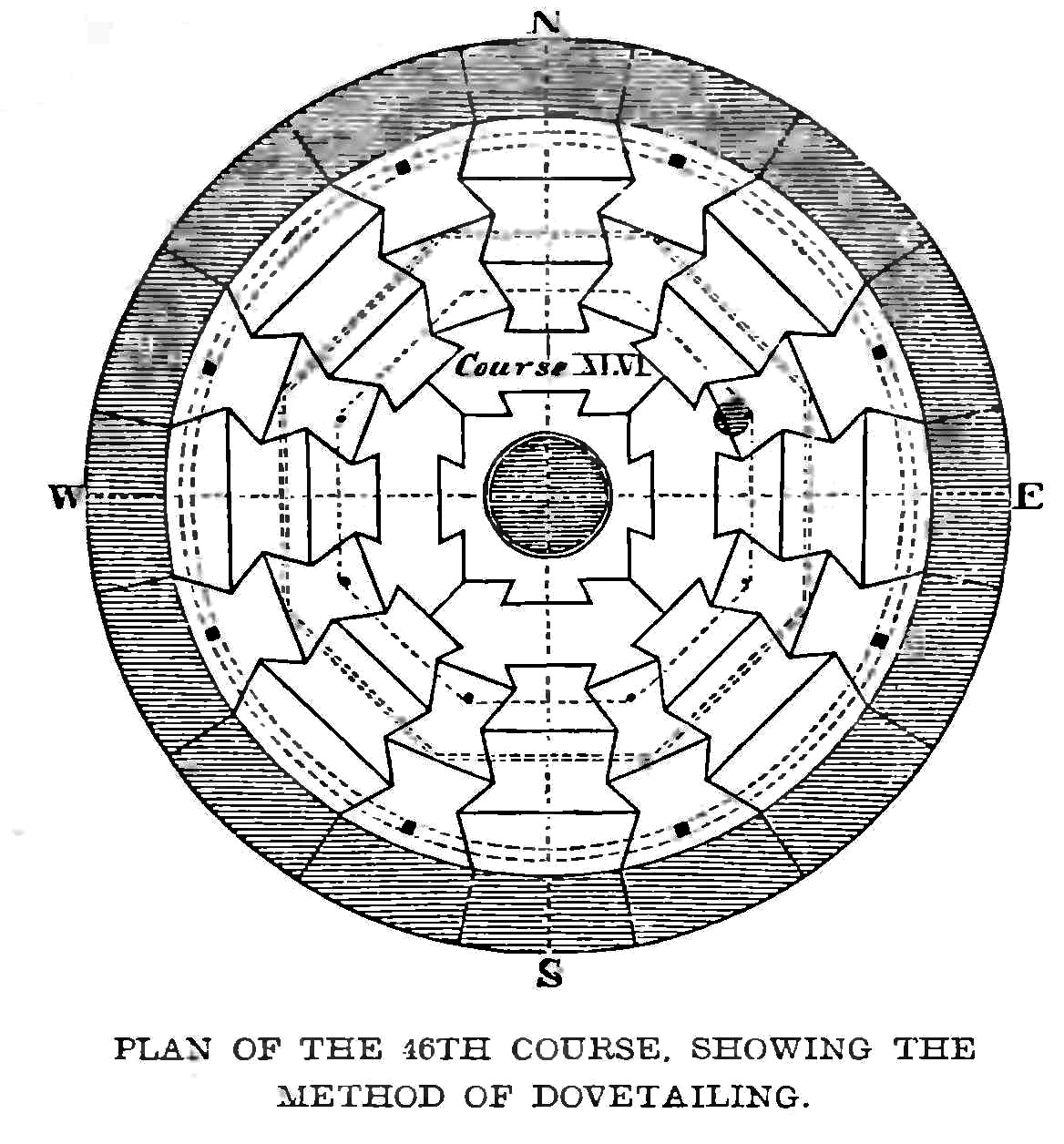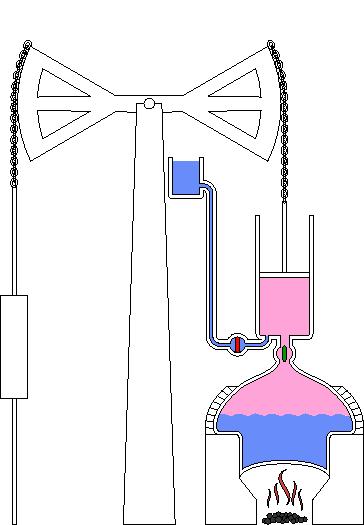|
Boiler (power Generation)
file:Dampfkessel für eine Stationärdampfmaschine im Textilmuseum Bocholt.jpg, An industrial boiler, originally used for supplying steam to a stationary steam engine A boiler or steam generator is a device used to create steam by applying heat energy to water. Although the definitions are somewhat flexible, it can be said that older steam generators were commonly termed ''boilers'' and worked at low to medium pressure () but, at pressures above this, it is more usual to speak of a ''steam generator''. A boiler or steam generator is used wherever a source of steam is required. The form and size depends on the application: mobile steam engines such as steam locomotives, portable engines and Traction engine, steam-powered road vehicles typically use a smaller boiler that forms an integral part of the vehicle; stationary steam engines, industrial installations and power stations will usually have a larger separate steam generating facility connected to the point-of-use by piping. ... [...More Info...] [...Related Items...] OR: [Wikipedia] [Google] [Baidu] |
Turbogenerator
A turbo generator is an electric generator connected to the shaft of a turbine (water, steam, or gas) for the generation of electric power. Large steam-powered turbo generators provide the majority of the world's electricity and are also used by steam-powered turbo-electric ships. Small turbo-generators driven by gas turbines are often used as auxiliary power units (APU, mainly for aircraft). History The first turbo-generators were electric generators powered by water turbines. The first Hungarian water turbine was designed by the engineers of the Ganz Works in 1866; industrial-scale production with dynamo generators started only in 1883. Engineer Charles Algernon Parsons demonstrated a DC steam-powered turbo generator using a dynamo in 1887, and by 1901 had supplied the first large industrial AC turbo generator of megawatt power to a plant in Elberfeld, Germany. Turbo generators were also used on steam locomotives as a power source for coach lighting and water pumps ... [...More Info...] [...Related Items...] OR: [Wikipedia] [Google] [Baidu] |
Oliver Evans
Oliver Evans (September 13, 1755 – April 15, 1819) was an American inventor, engineer, and businessman born in rural Delaware and later rooted commercially in Philadelphia. He was one of the first Americans to build steam engines and an advocate of high-pressure steam (as opposed to low-pressure steam). A pioneer in the fields of automation, materials handling and steam power, Evans was one of the most prolific and influential inventors in the early years of the United States. He left behind a long series of accomplishments, most notably designing and building the first fully automated industrial process, the first high-pressure steam engine, first vapor compression refrigeration and the first (albeit crude) amphibious vehicle and American automobile. Born in Newport, Delaware, Evans received little formal education and in his mid-teens was apprenticed to a wheelwright. Going into business with his brothers, he worked for over a decade designing, building and perfecting an a ... [...More Info...] [...Related Items...] OR: [Wikipedia] [Google] [Baidu] |
Flue
A flue is a duct, pipe, or opening in a chimney for conveying exhaust gases from a fireplace, furnace, water heater, boiler, or generator to the outdoors. Historically the term flue meant the chimney itself. In the United States, they are also known as vents for boilers and as breeching for water heaters and modern furnaces. They usually operate by buoyancy, also known as the stack effect, or the combustion products may be "induced" via a blower. As combustion products contain carbon monoxide and other dangerous compounds, proper "draft", and admission of replacement air is imperative. Building codes, and other standards, regulate their materials, design, and installation. Heat retention Flues are adjustable and are designed to release noxious gases to the atmosphere. They often have the disadvantageous effect of releasing useful household heat to the atmosphere when not properly set—the very opposite of why the fire was lit in the first place. Fireplaces are one ... [...More Info...] [...Related Items...] OR: [Wikipedia] [Google] [Baidu] |
John Smeaton
John Smeaton (8 June 1724 – 28 October 1792) was an English civil engineer responsible for the design of bridges, canals, harbours and lighthouses. He was also a capable mechanical engineer and an eminent scholar, who introduced various scientific method, scientific methodologies into engineering.Morris, Andrew M.A. (2021). "English engineer John Smeaton's experimental method(s)". Studies in History and Philosophy of Science, 89, 283-294, url=https://doi.org/10.1016/j.shpsa.2021.07.004 Smeaton was the first self-proclaimed "civil engineer", and is often regarded as the "father of civil engineering".Denny, Mark (2007). "Ingenium: Five Machines That Changed the World". p. 34. JHU Press. He pioneered the use of hydraulic lime in concrete, using pebbles and powdered brick as aggregate. Smeaton was associated with the Lunar Society. Law and physics Smeaton was born in Austhorpe, Leeds, England. After studying at Leeds Grammar School he joined his father's law firm, but left t ... [...More Info...] [...Related Items...] OR: [Wikipedia] [Google] [Baidu] |
Chimney
A chimney is an architectural ventilation structure made of masonry, clay or metal that isolates hot toxic exhaust gases or smoke produced by a boiler, stove, furnace, incinerator, or fireplace from human living areas. Chimneys are typically vertical, or as near as possible to vertical, to ensure that the gases flow smoothly, drawing air into the combustion in what is known as the stack, or chimney effect. The space inside a chimney is called the '' flue''. Chimneys are adjacent to large industrial refineries, fossil fuel combustion facilities or part of buildings, steam locomotives and ships. In the United States, the term '' smokestack industry'' refers to the environmental impacts of burning fossil fuels by industrial society, including the electric industry during its earliest history. The term ''smokestack'' (colloquially, ''stack'') is also used when referring to locomotive chimneys or ship chimneys, and the term ''funnel'' can also be used. The height of a chim ... [...More Info...] [...Related Items...] OR: [Wikipedia] [Google] [Baidu] |
Brickwork
Brickwork is masonry produced by a bricklayer, using bricks and mortar. Typically, rows of bricks called '' courses'' are laid on top of one another to build up a structure such as a brick wall. Bricks may be differentiated from blocks by size. For example, in the UK a brick is defined as a unit having dimensions less than and a block is defined as a unit having one or more dimensions greater than the largest possible brick. Brick is a popular medium for constructing buildings, and examples of brickwork are found through history as far back as the Bronze Age. The fired-brick faces of the ziggurat of ancient Dur-Kurigalzu in Iraq date from around 1400 BC, and the brick buildings of ancient Mohenjo-daro in modern day Pakistan were built around 2600 BC. Much older examples of brickwork made with dried (but not fired) bricks may be found in such ancient locations as Jericho in Palestine, Çatal Höyük in Anatolia, and Mehrgarh in Pakistan. These structures have survived fr ... [...More Info...] [...Related Items...] OR: [Wikipedia] [Google] [Baidu] |
Vacuum
A vacuum (: vacuums or vacua) is space devoid of matter. The word is derived from the Latin adjective (neuter ) meaning "vacant" or "void". An approximation to such vacuum is a region with a gaseous pressure much less than atmospheric pressure. Physicists often discuss ideal test results that would occur in a ''perfect'' vacuum, which they sometimes simply call "vacuum" or free space, and use the term partial vacuum to refer to an actual imperfect vacuum as one might have in a laboratory or in space. In engineering and applied physics on the other hand, vacuum refers to any space in which the pressure is considerably lower than atmospheric pressure. The Latin term ''in vacuo'' is used to describe an object that is surrounded by a vacuum. The ''quality'' of a partial vacuum refers to how closely it approaches a perfect vacuum. Other things equal, lower gas pressure means higher-quality vacuum. For example, a typical vacuum cleaner produces enough suction to reduce air pressur ... [...More Info...] [...Related Items...] OR: [Wikipedia] [Google] [Baidu] |
Kettle
A kettle, sometimes called a tea kettle or teakettle, is a device specialized for boiling water, commonly with a ''lid'', ''spout'', and ''handle''. There are two main types: the ''stovetop kettle'', which uses heat from a cooktop, hob, and the ''electric kettle'', which is a small appliance, small kitchen appliance with an internal heating element. Etymology The word ''kettle'' originates from Old Norse ''ketill'', "cauldron". The Old English spelling was ''cetel'' with initial ''che-'' [tʃ] like 'cherry', Middle English (and dialectal) was ''chetel'', both come (together with German ''Kessel'' "cauldron") ultimately from Germanic ''*katilaz'', that was borrowed from Latin ''catillus'', diminutive form of ''catinus'' "deep vessel for serving or cooking food", which in various contexts is translated as "bowl", "deep dish", or "funnel". Stovetop kettles A modern stovetop kettle is a metal vessel with a flat bottom used to heat water on a stovetop, stovetop or hob. They usua ... [...More Info...] [...Related Items...] OR: [Wikipedia] [Google] [Baidu] |
Newcomen Engine
The atmospheric engine was invented by Thomas Newcomen in 1712, and is sometimes referred to as the Newcomen fire engine (see below) or Newcomen engine. The engine was operated by condensing steam being drawn into the cylinder, thereby creating a partial vacuum which allowed atmospheric pressure to push the piston into the cylinder. It is significant as the first practical device to harness steam to produce mechanical work. Newcomen engines were used throughout Britain and Europe, principally to pump water out of mining, mines. Hundreds were constructed during the 18th century. James Watt's Watt steam engine, later engine design was an improved version of the Newcomen engine that roughly doubled fuel efficiency. Many atmospheric engines were converted to the Watt design. As a result, Watt is today better known than Newcomen in relation to the origin of the steam engine. Precursors Prior to Newcomen a number of small steam devices of various sorts had been made, but most were es ... [...More Info...] [...Related Items...] OR: [Wikipedia] [Google] [Baidu] |
Feed Water
Boiler feedwater is the water which is supplied to a boiler. The feed water is put into the steam drum from a feed pump. In the steam drum the feed water is then turned into steam from the heat. After the steam is used, it is then dumped to the main condenser. From the condenser, it is then pumped to the deaerated feed tank. From this tank it then goes back to the steam drum to complete its cycle. The feedwater is never open to the atmosphere. This cycle is known as a closed system or Rankine cycle. History of feedwater treatment During the early development of boilers, water treatment was not so much of an issue, as temperatures and pressures were so low that high amounts of scale and rust would not form to such a significant extent, especially if the boiler was “ blown down”. It was general practice to install zinc plates and/or alkaline chemicals to reduce corrosion within the boiler. Many tests had been performed to determine the cause (and possible protection) from corr ... [...More Info...] [...Related Items...] OR: [Wikipedia] [Google] [Baidu] |
Economiser
Economizers (US and Oxford spelling), or economisers (UK), are mechanical devices intended to reduce energy consumption, or to perform useful function such as preheating a fluid. The term economizer is used for other purposes as well. Boiler, power plant, heating, refrigeration, ventilating, and air conditioning ( HVAC) may all use economizers. In simple terms, an economizer is a heat exchanger. Stirling engine Robert Stirling's innovative contribution to the design of hot air engines of 1816 was what he called the 'Economiser'. Later known as the regenerator, it stored heat from the hot portion of the engine as the air passed to the cold side, and released heat to the cooled air as it returned to the hot side. This innovation improved the efficiency of the Stirling engine enough to make it commercially successful in particular applications, and has since been a component of every air engine that is called a Stirling engine. Boilers In boilers, economizers are heat exchange ... [...More Info...] [...Related Items...] OR: [Wikipedia] [Google] [Baidu] |







